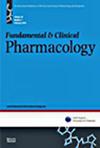Real-world interpatient variability in the pharmacokinetics of levetiracetam
Abstract
Background
Levetiracetam (LEV) is an antiepileptic drug (AED) used to treat a variety of seizures in adult and pediatric populations. It is an ideal AED due to its favorable pharmacokinetic (PK) and pharmacodynamic profile and lack of interactions with other AEDs.
Methods
This retrospective cohort study was designed to identify covariates that affect LEV clearance and volume of distribution and to generate a population PK model. Adults with a seizure history receiving LEV during hospital admission with a minimum of one serum LEV concentration available were included in the study. Population PK modeling and covariate testing was performed with MONOLIX Suite 2020R1 (Lixoft, France).
Results
A total of 162 serum concentrations were collected from 143 patients. Age, sex, body weight descriptors, serum creatinine, creatinine clearance (CrCL), serum albumin, liver enzymes, and total bilirubin were evaluated. Body surface area (BSA) was a significant covariate for the apparent volume of distribution (V/F). The exclusion of BSA as a covariate of V/F increased the objective function value (OFV) 5.6. CrCL was a significant covariate of apparent plasma clearance (CL/F). The exclusion of CrCL increased the OFV by 18.16 and significantly increased the root square error (RSE) % of the between-subject variabilities of the parameters.
Conclusion
LEV clearance is an effective predictor of serum concentration. CrCL was a significant covariate influencing LEV clearance, and BSA was found to influence the volume of distribution. Further studies are needed to determine the effect of body weight descriptors on LEV clearance and, ultimately, outcomes.


 求助内容:
求助内容: 应助结果提醒方式:
应助结果提醒方式:


